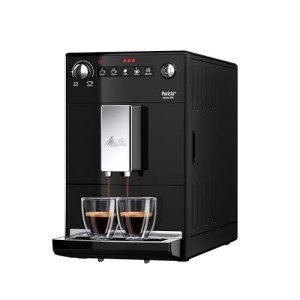20 Myths About Dual Boiler Espresso Machines: Debunked
Understanding Dual Boiler Espresso Machines: A Comprehensive Guide
Espresso is an art as much as it is a science. For coffee enthusiasts and baristas alike, achieving the best shot of espresso necessitates accuracy and control over developing variables. One of the most efficient methods to accomplish this precision is through the use of dual boiler espresso machines. This short article delves into the performance, benefits, and considerations of dual boiler espresso machines for both novices and knowledgeable coffee connoisseurs.
What is a Dual Boiler Espresso Machine?
A dual boiler espresso machine features two separate boilers: one for developing espresso and the other for steaming milk. This design enables the user to brew coffee and steam milk all at once, accomplishing optimal temperature control for both processes. This is vital for creating lattes, coffees, and macchiatos, where both active ingredients are vital.
Table 1: Key Components of Dual Boiler Espresso Machines
Element
Function
Espresso Boiler
Heats water to the ideal brewing temperature level (around 190 ° F)
. Steam Boiler
Warms water to a greater temperature level (around 250 ° F) for steaming milk.
PID Controller
Controls the temperature level of the boilers for accuracy developing.
Group Head
Where the coffee premises sit and warm water passes through.
Steam Wand
Provides steam to froth milk.
Benefits of Dual Boiler Espresso Machines
1. Synchronised Brewing and Steaming
The most considerable benefit of dual boiler espresso machines is the ability to brew espresso and steam milk at the exact same time. This performance is especially advantageous in hectic environments, such as cafes, where speed and quality are vital.
2. Consistent Temperature Control
Dual boiler machines typically feature sophisticated PID (Proportional Integral Derivative) controllers that maintain a consistent temperature level throughout the developing process. Consistency is important in espresso making to make sure the very best extraction, therefore improving flavor and aroma.
3. Customization and Versatility
With 2 separate boilers, users can tailor the temperature level settings for both espresso developing and milk steaming. This indicates various kinds of coffee, such as lighter or darker roasts, can be prepared completely to fit private taste profiles.
4. Perfect for Advanced Techniques
For those interested in latte art or other sophisticated methods, a dual boiler espresso machine provides the flexibility to work with numerous milk textures while likewise extracting espresso. This adaptability makes it an appealing alternative for baristas who wish to sharpen their skills.
5. Durability and Durability
Lots of dual boiler machines are constructed with high-quality products created for longevity. They are typically made of stainless steel and function long lasting parts, making them a worthwhile investment for anyone major about coffee.
Disadvantages of Dual Boiler Espresso Machines
Regardless of their numerous advantages, dual boiler machines can have some disadvantages:
- Higher Cost: Dual boiler machines tend to be more expensive than their single-boiler equivalents, which may not be appropriate for casual coffee drinkers.
- Size and Space: These machines might occupy more countertop space than others, making them less ideal for little cooking areas.
Table 2: Key Considerations When Choosing a Dual Boiler Espresso Machine
Factor to consider
Explanation
Budget
Dual boiler machines can range from ₤ 1,000 to over ₤ 4,000.
Size
Examine your cooking area space before acquiring.
Brand name Reputation
Look for well-reviewed brands with good consumer assistance.
Functions
Consider what functions are important (e.g., PID controller, volumetric options).
Upkeep
Some machines might need more routine maintenance than others.
Frequently asked questions
1. Are Manual Espresso Machines ?
Yes, they deserve the financial investment for serious coffee lovers or professional baristas who value precision in espresso extraction and milk steaming.
2. How do I maintain a dual boiler espresso machine?
Regular maintenance includes descaling the machine, cleaning the group head, and making sure that the steam wand is totally free of milk residue. Consult the maker's manual for particular standards.
3. Can I use a dual boiler espresso machine for other brewing methods?
Usually, dual boiler machines are designed mainly for espresso. However, they can typically brew quality drip coffee and other styles with the best settings and changes.
4. What brand names are known for their dual boiler machines?
Some reputable brands consist of La Spaziale, Breville, and ECM. Each brand has its own unique features and pricing.
5. What is the typical lifespan of a dual boiler espresso machine?
With appropriate care and upkeep, a dual boiler machine can last over a years, making it a long-lasting investment for coffee enthusiasts.
Dual boiler espresso machines represent the peak of espresso-making innovation, merging art and science into one compact device. While they require a higher preliminary investment and more countertop space, the benefits they offer— such as synchronised developing and steaming, precise temperature level control, and toughness— make them perfect for severe coffee lovers. Understanding the functions, advantages, and considerations for these machines will allow customers to make educated choices and raise their coffee brewing experience. Whether in the house or in a hectic café, a dual boiler machine can genuinely enhance the art of espresso.
